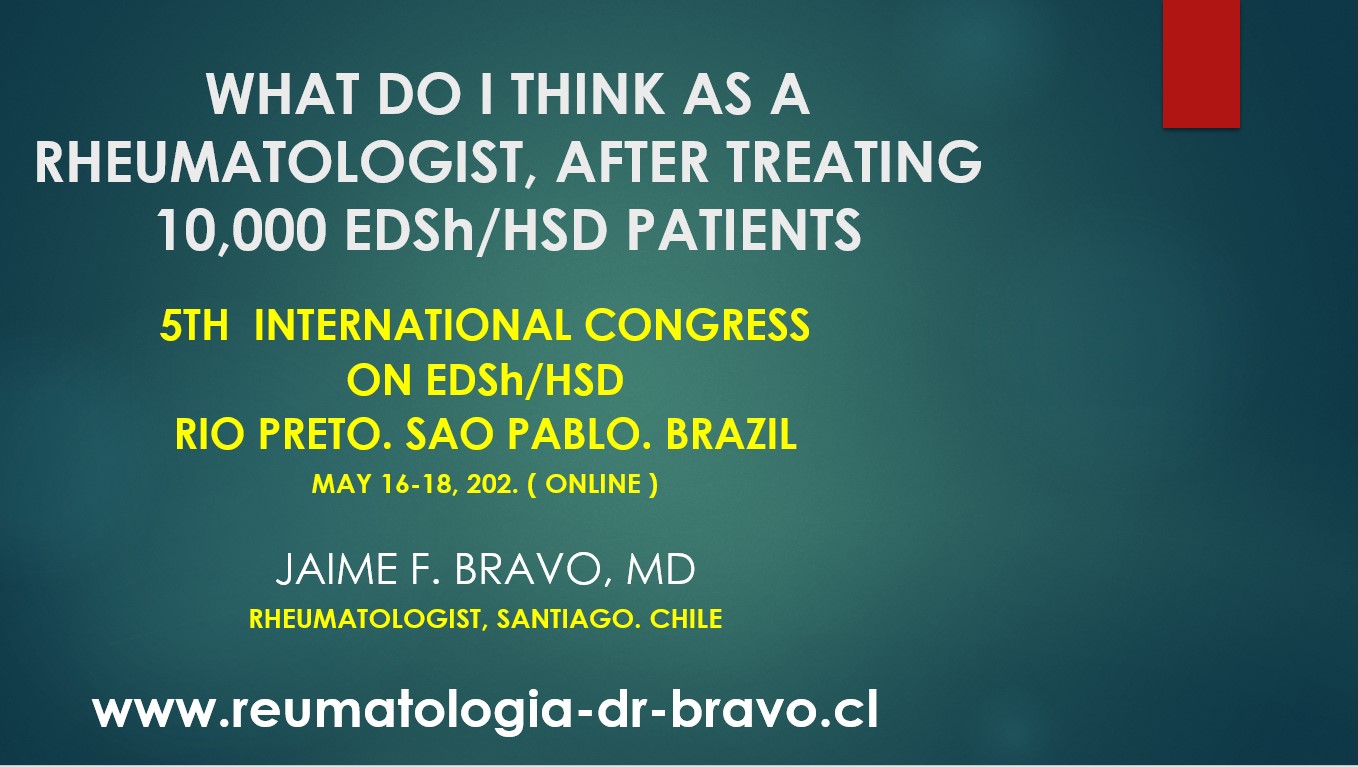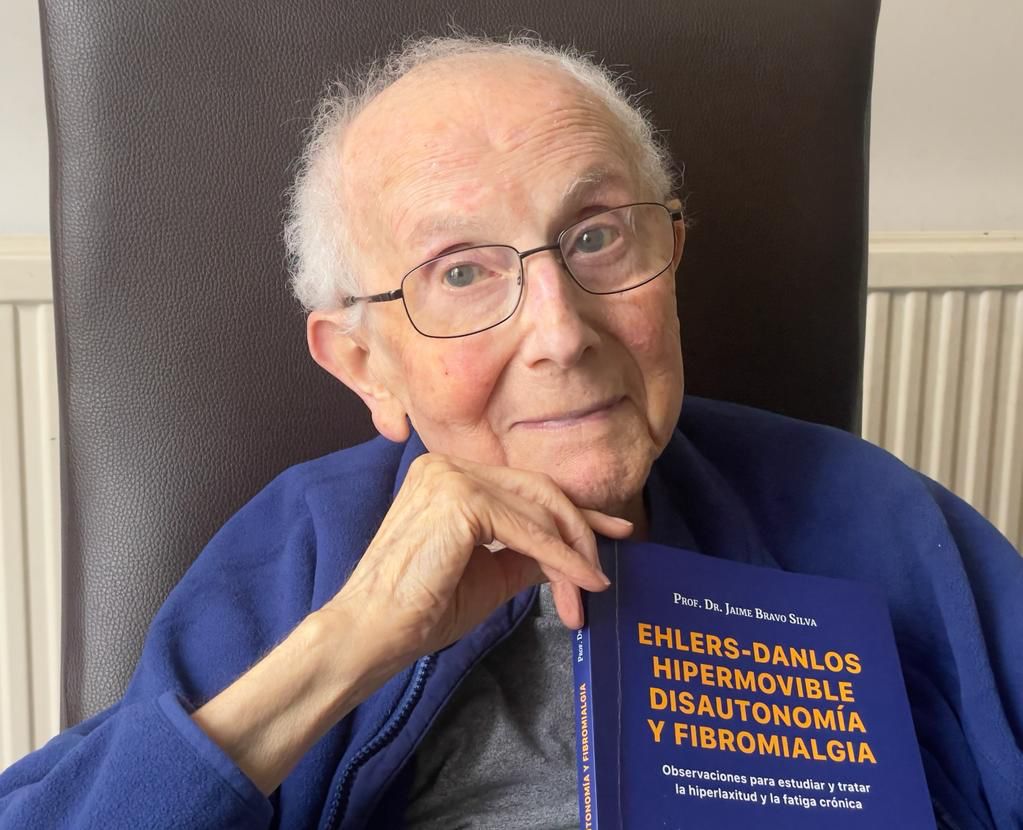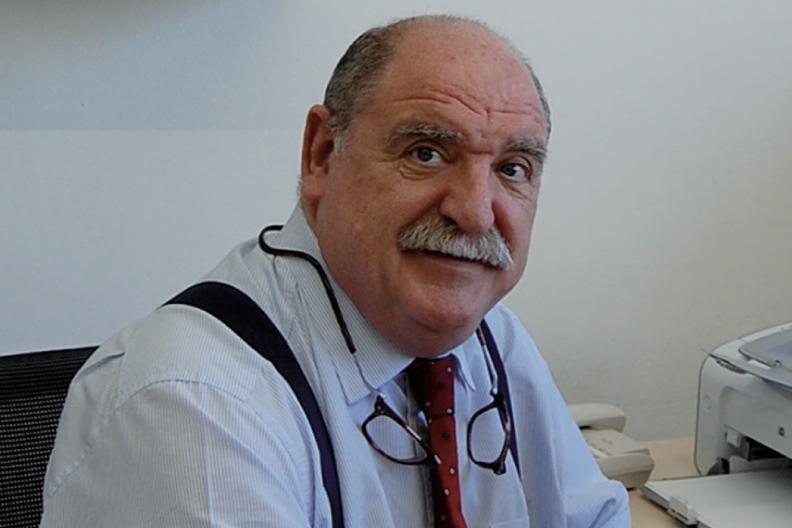Recent Articles
Fibromyalgia in the 21st Century
Fibromyalgia and the Ehlers-Danlos Syndrome
Updated, interesting and highlighted new texts
For patients, parents or tutors, teachers and physicians
Thoughts about Ehlers-Danlos and Dysautonomia
Information on hypermobility (Ehlers-Danlos) and Dysautonomia,

Formative Course for health professionals about the Ehlers-Danlos Syndrome, held at the University of París-Est-Créteil, France
For more information, Click here.
Invitation

Prof. Bravo is a member of an International Group of 83 physicians from 14 countries, all with different specialization areas, but all interested in the Ehlers-Danlos Syndrome. Their objective is to update and/or reclassify the diagnostic criteria and treatment of the different Ehlers-Danlos Syndromes. During the year, ...
Participation in Medical Congresses
e
II Escuela Internacional ANSEDH
Síndromes de Ehlers-Danlos
Málaga, Spain, November 9th and 10th, 2018.
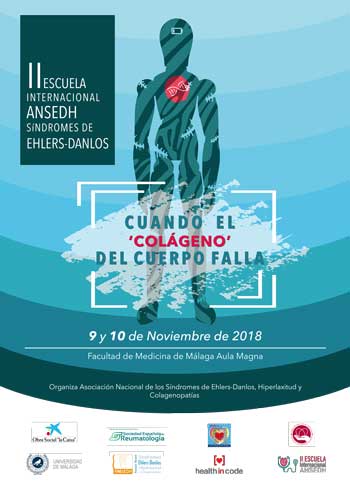

Faculty members of the congress Prof. Bulbena, Carolina Baeza-Velasco and
Prof. Hamonet. Prof. Grahame and Prof. Bravo were exposing at the time.
Prof. Bravo presented a paper about the Diagnosis and Treatment
of Dysautonomias in EhlersDanlos.
IV Ehlers-Danlos Syndrome International Colloqium
Paris, France, March 17th, 2018
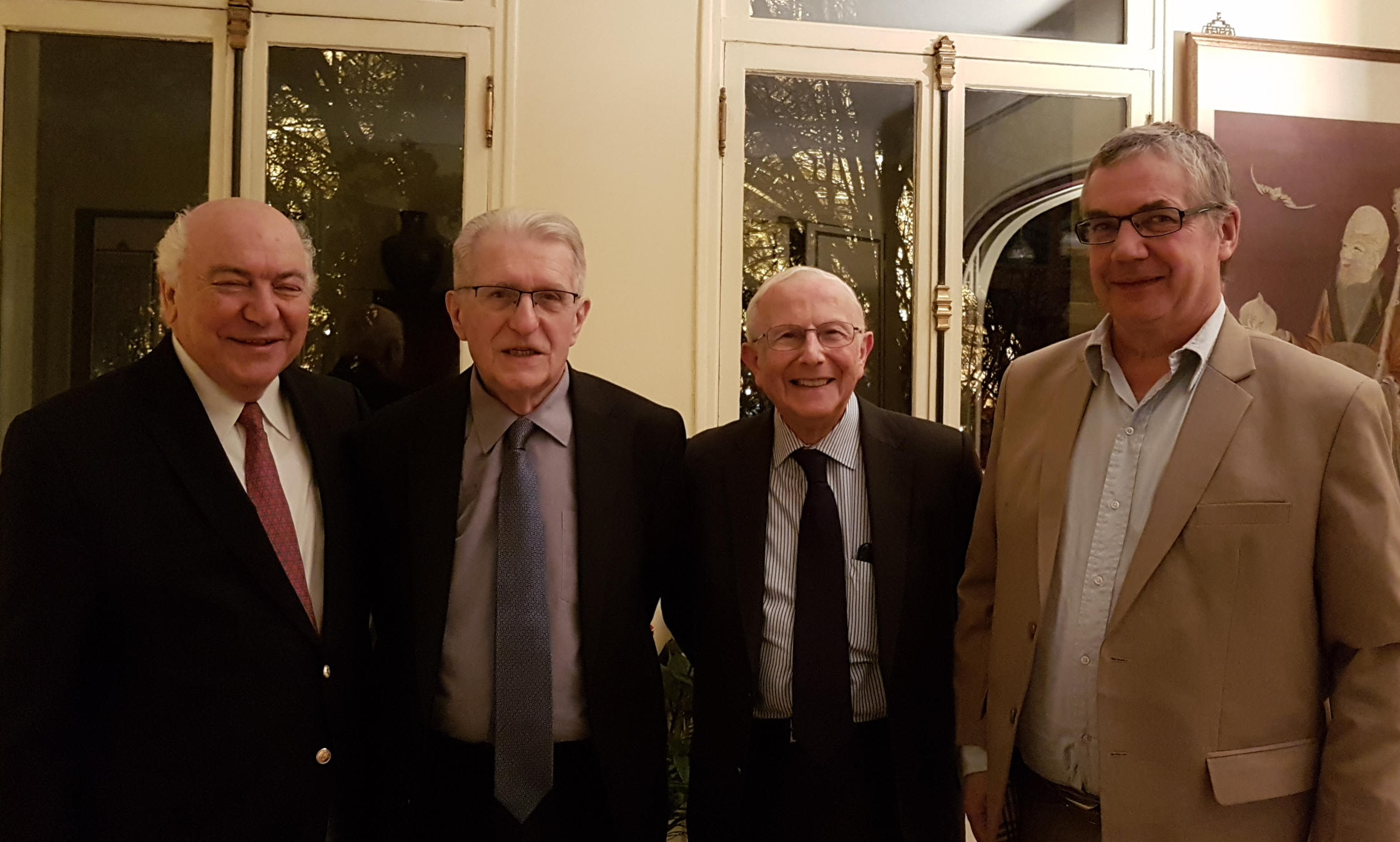
Professors Bravo, Hamonet (Fr), Grahame (UK) and Amoretti (Fr)

Quite a good turn out!!!!
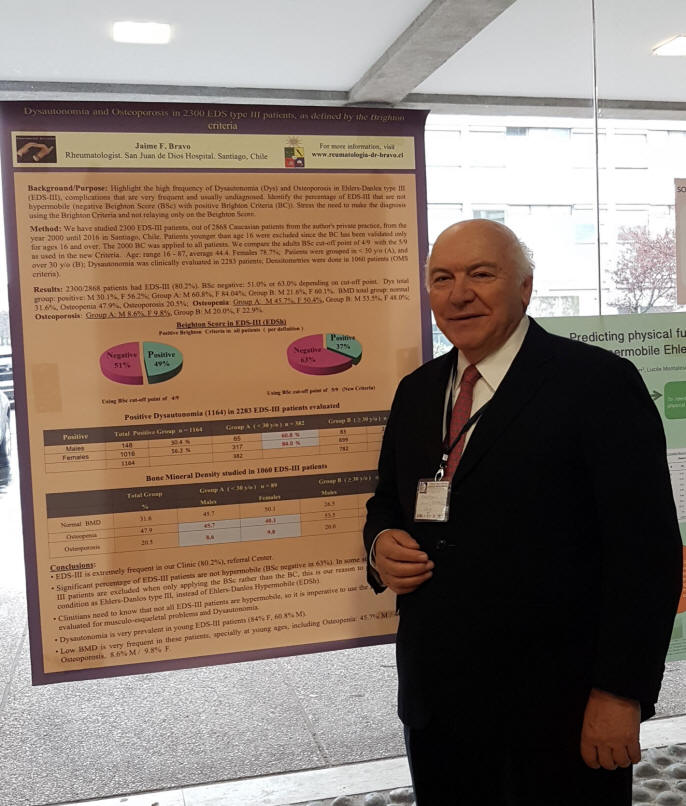
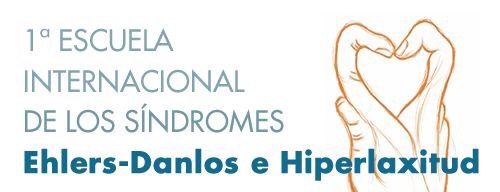
1st INTERNATIONAL SCHOOL ABOUT THE EHLERS-DANLOS SYNDROMES AND HIPERMOBILITY
MURCIA, SPAIN, OCTOBER 27 AND 28, 2017

Professors Bulbena, Bravo, Baeza-Velasco, Hamonet, Henderson and Grahame
Professor Bravo dictated a practical class on the Diagnosis of the Ehlers-Danlos Syndrome.
III Ehlers-Danlos Syndrome International Colloqium
Paris, France, March 24th-25th, 2017
III Colloque Syndrome d'Ehlers-Danlos, Paris, France, 24 et 25 Mars 2017


Tour Eiffel Iluminated. Prof. Jaime Bravo presenting a poster of his work.
For the third consecutive year, Prof. Bravo was invited to participate in the III Ehlers-Danlos International Colloquium, held once again in Paris. On March the 24th, he coordinated the pre-Colloquium round table, and on the following day he participated in the Meeting and presented a poster showing his theory about the visual signs that permit to suspect the early diagnosis of EDS-III ...
American College of Rheumatology
Washington D.C., USA. November 12 -16, 2016.

Hipermobility Study Group, 2016
II International Congress
Ehlers-Danlos and Hypermobility Syndrome
Barcelona Spain, October 7th and 8th, 2016
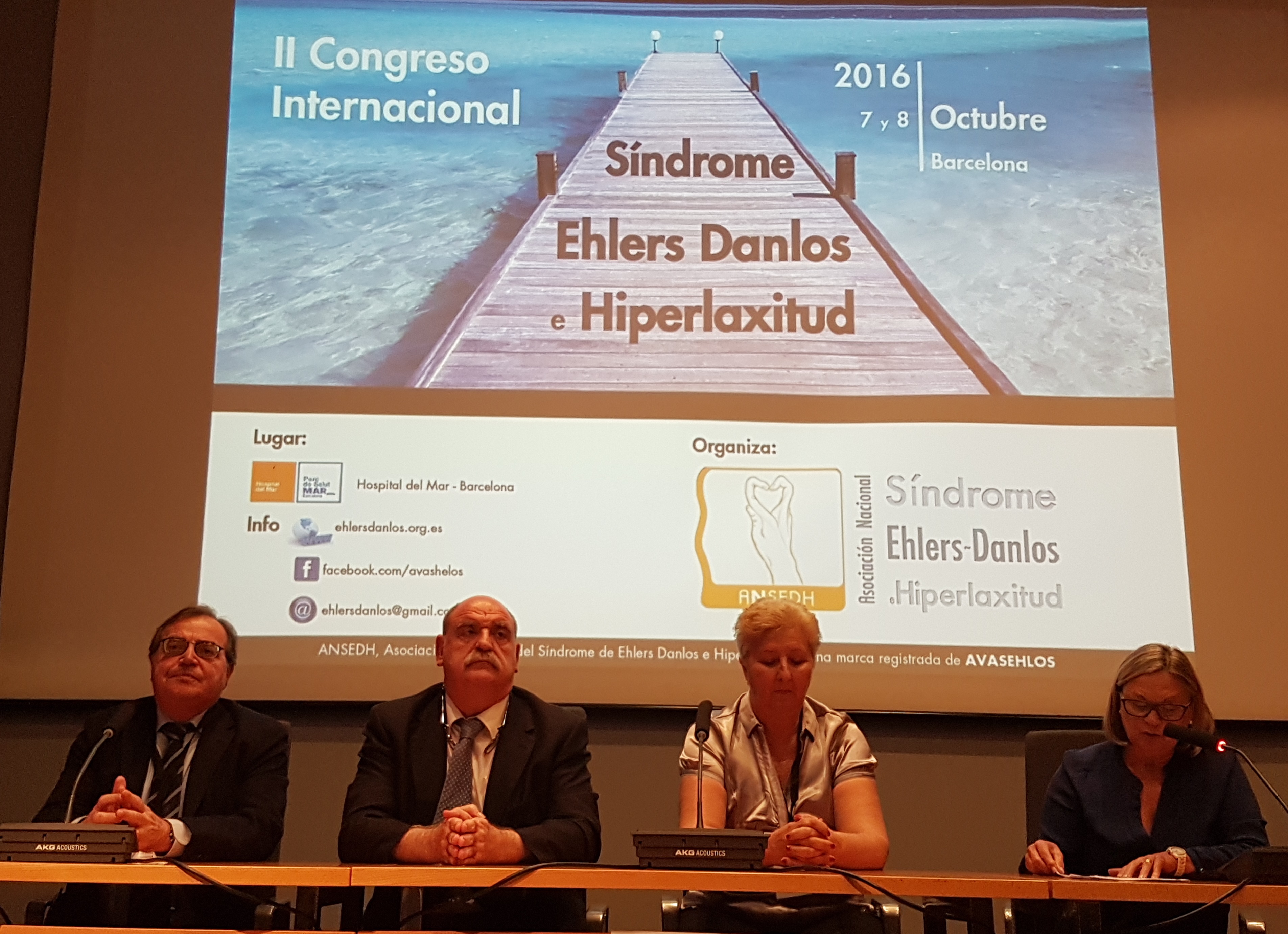
Inaugural table of the Congress, presided by Mrs. Josefa Lopez.
President of the Ehlers - Danlos and Hypermobility Syndrome Association (ANSEDH)
Ehlers-Danlos Syndrome International Colloquium
Paris, France, March 19th, 2016
Colloque Syndrome d'Ehlers-Danlos, Paris, France, March 19th 2016.
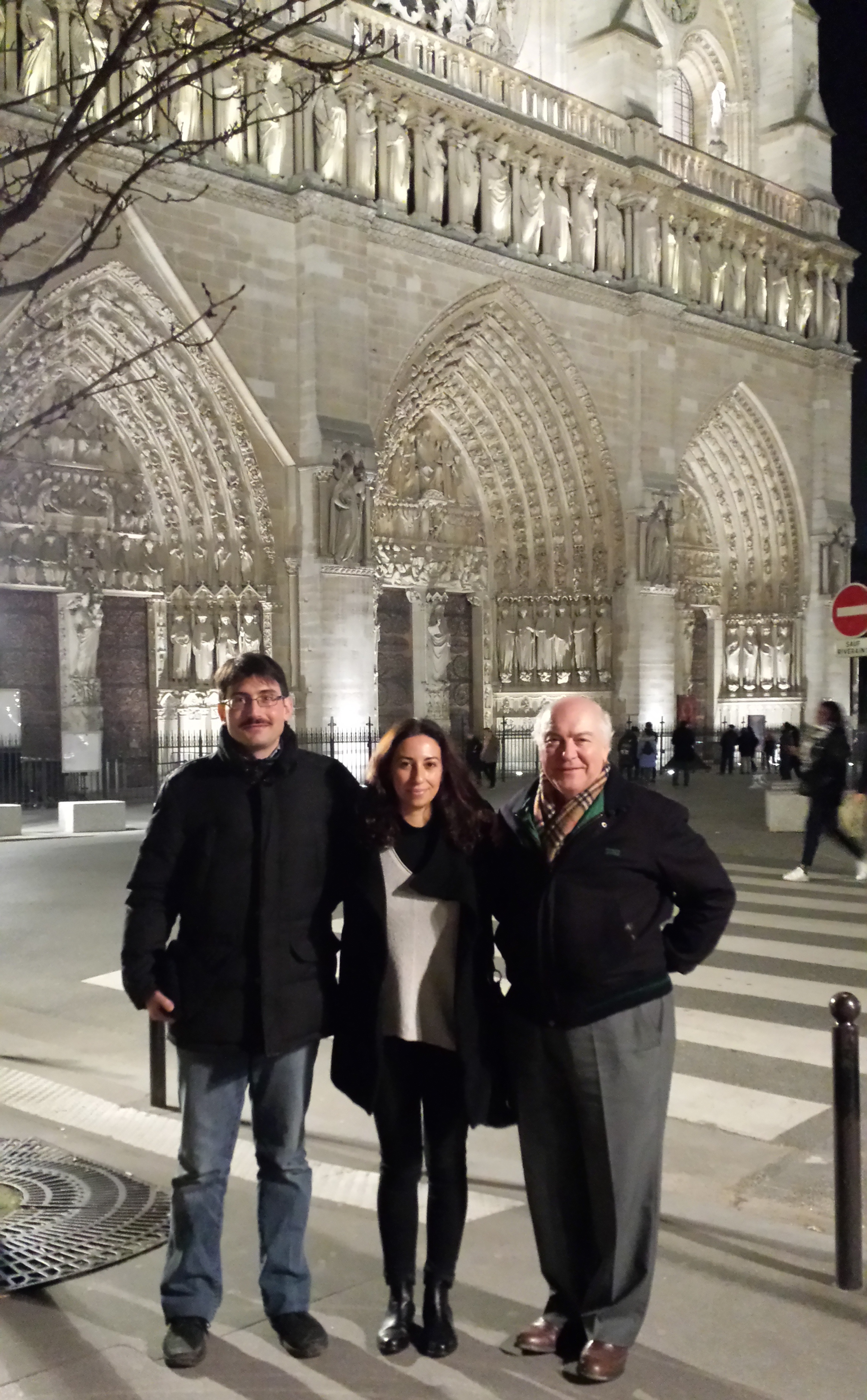
Marco Castori Carolina Baeza-Velasco Jaime Bravo
Notre Dame, Paris, France
to see old news click here
Previous Photos of the Month click here
Private Office
Dr. Bravo serves in his private office on Monday, Tuesday, and Thursday afternoons, and Friday mornings. Given his concern about Joint Hypermobility Syndrome and early diagnosis, Dr. Bravo now also sees hypermobile children from 5 years old.

